Well that has been very interesting - and I suspect there is more to come.
I received a report of a suspected Yellow Legged Hornet (YLH) in Osmington from one of our members. He had already trapped it, photographed it and reported it to DEFRA using the App.
DEFRA were in attendance very quickly and confirmed that it was a YLH. They spent several days looking for more but saw just one. Hopes were high this was an isolated incident where a couple had blown in from a cruise ship. In fact DEFRA felt by the end of the week they had done all they could.
However a member of the public, who had seen YLH notices in the area, also reported a sighting and had lots of photos. At this point activity stepped up gear. Bait stations were set and we saw many YLH visiting the bait but "track and trace" was difficult. This was partly due to the wind and partly due to the food available on the ivy. The YLH would wander round the ivy feeding and then off it went to find more ivy.
As "track and trace" was not working DEFRA brought in radio devices. The YLH is big enough to fly with a transmitter on its back and this is what one was made to do. This can be an expensive process if you lose the transmitter but nothing like as expensive as not finding a nest.
Using this method a nest was found - some 25 metres up a tree.
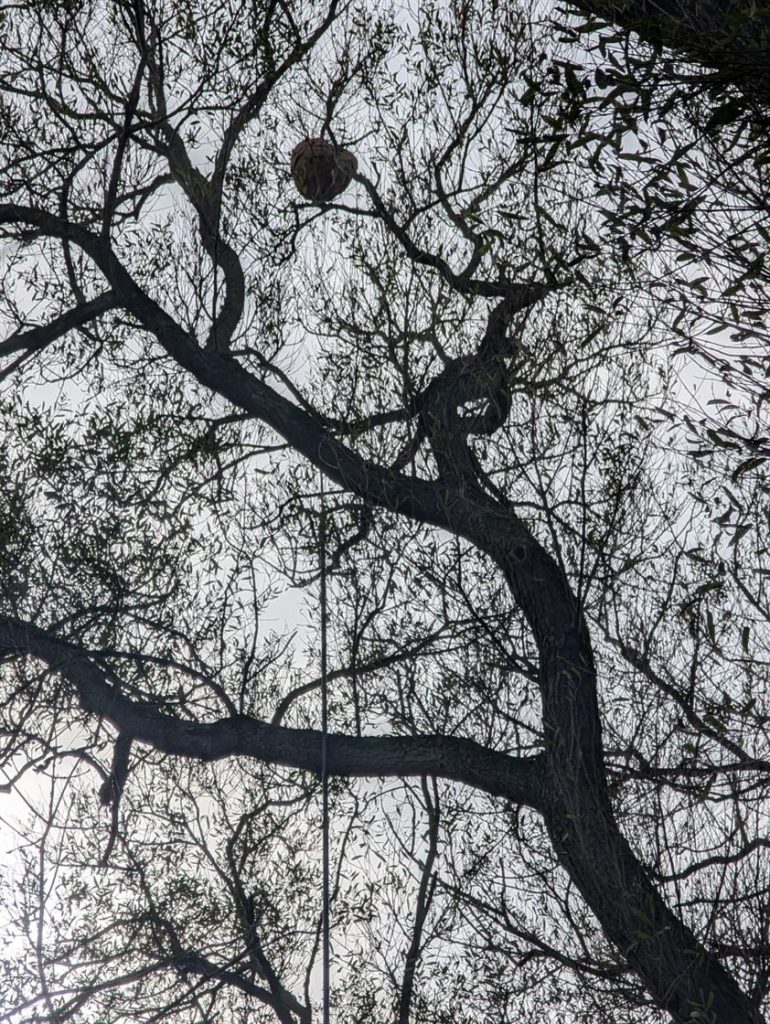
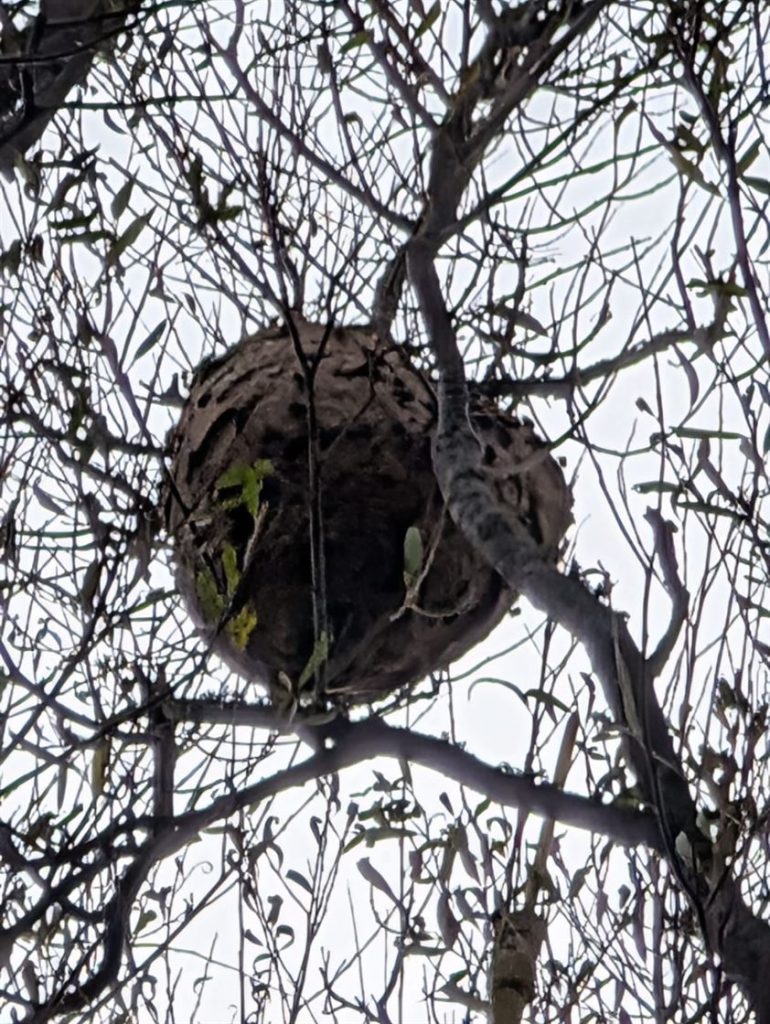
A lance was sent for from Kent and this was brought in to poison the nest.
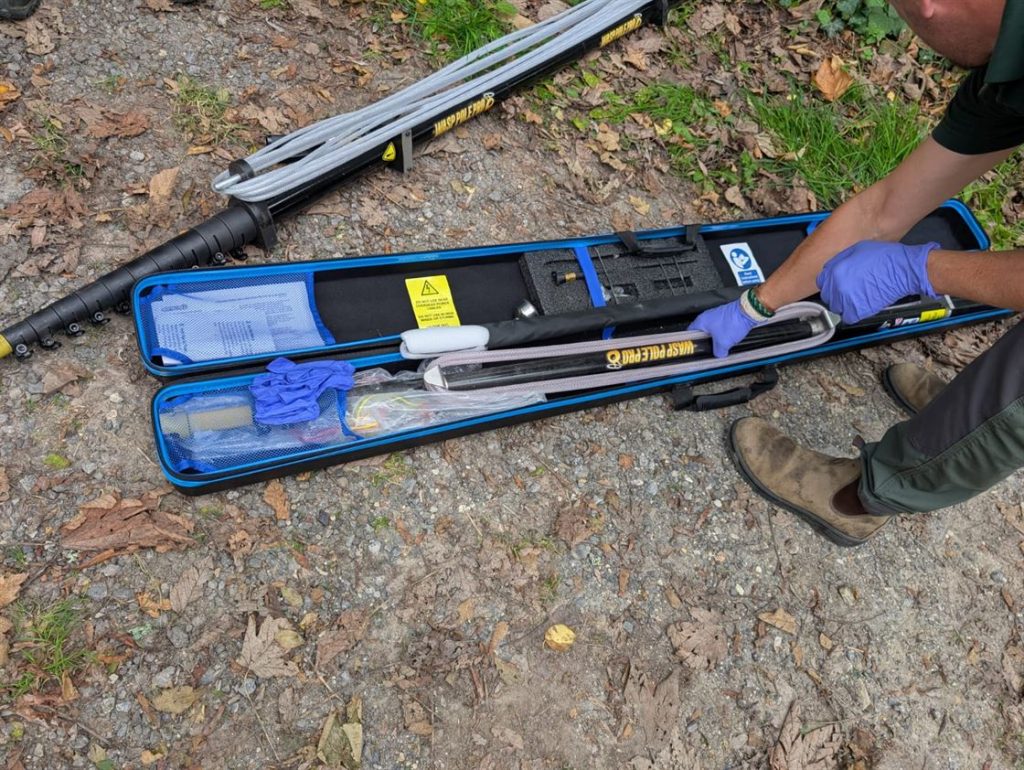
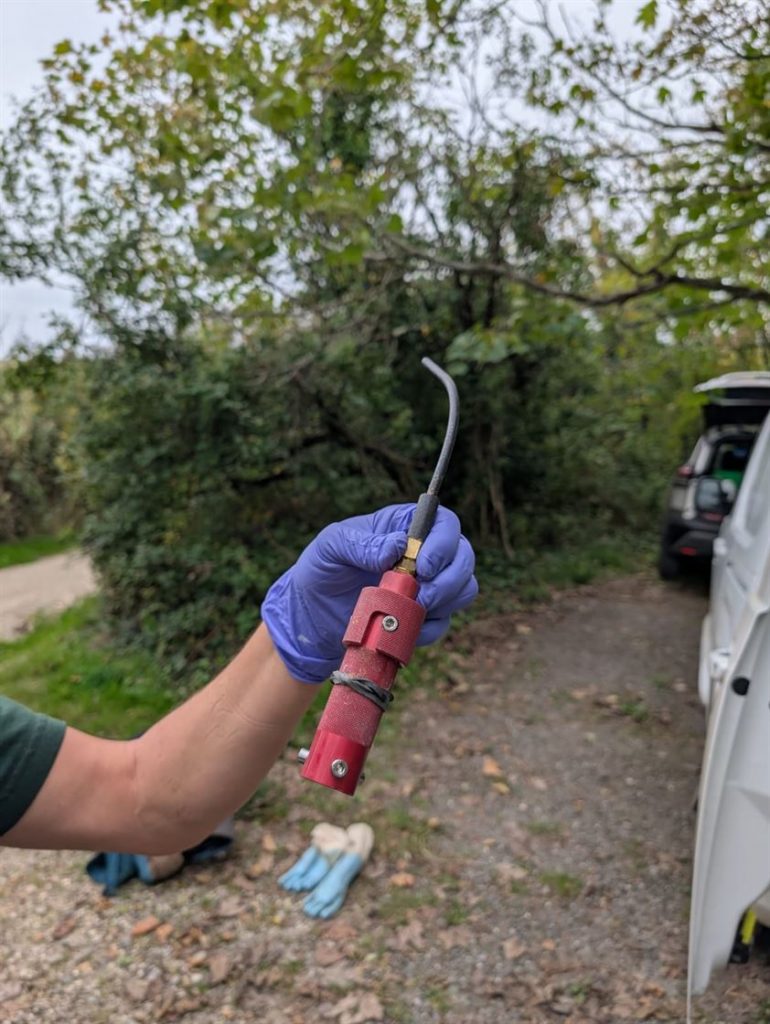


Once the nest was poisoned it was left for several days in case any more YLH returned to it.
After about ten days a specialist was brought in to climb the tree and retrieve the nest. The nest is retrieved so that a DNA analysis can be done to find if it is related to any other nest. In addition the nest contains poison which should not be left in the environment.
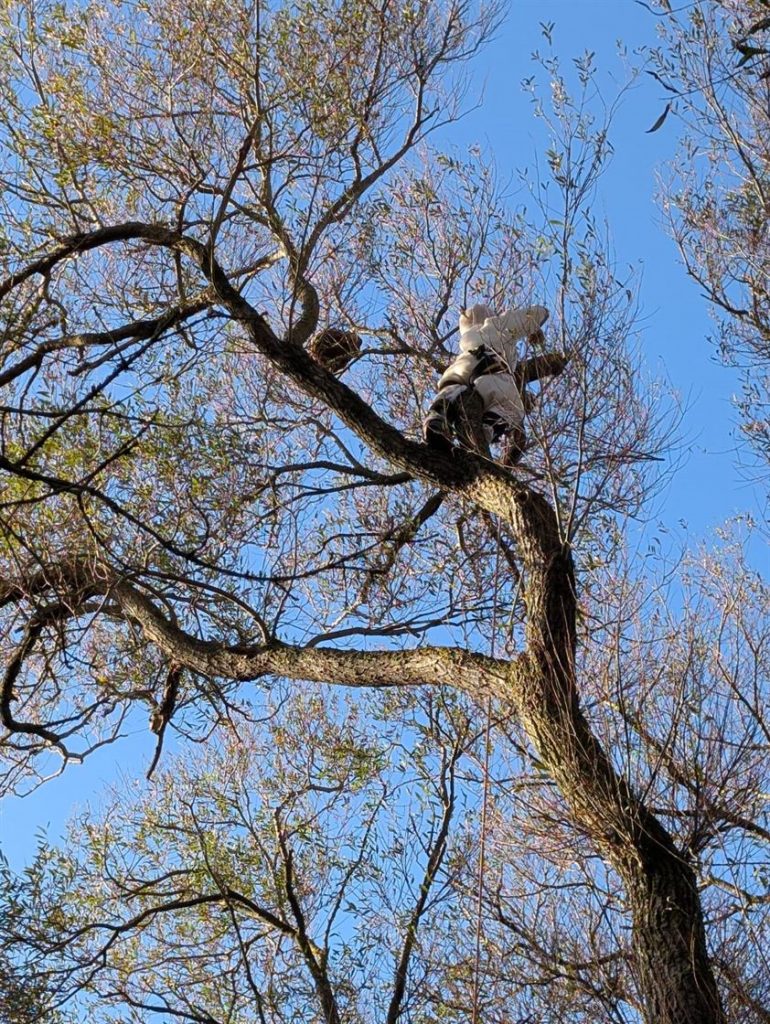
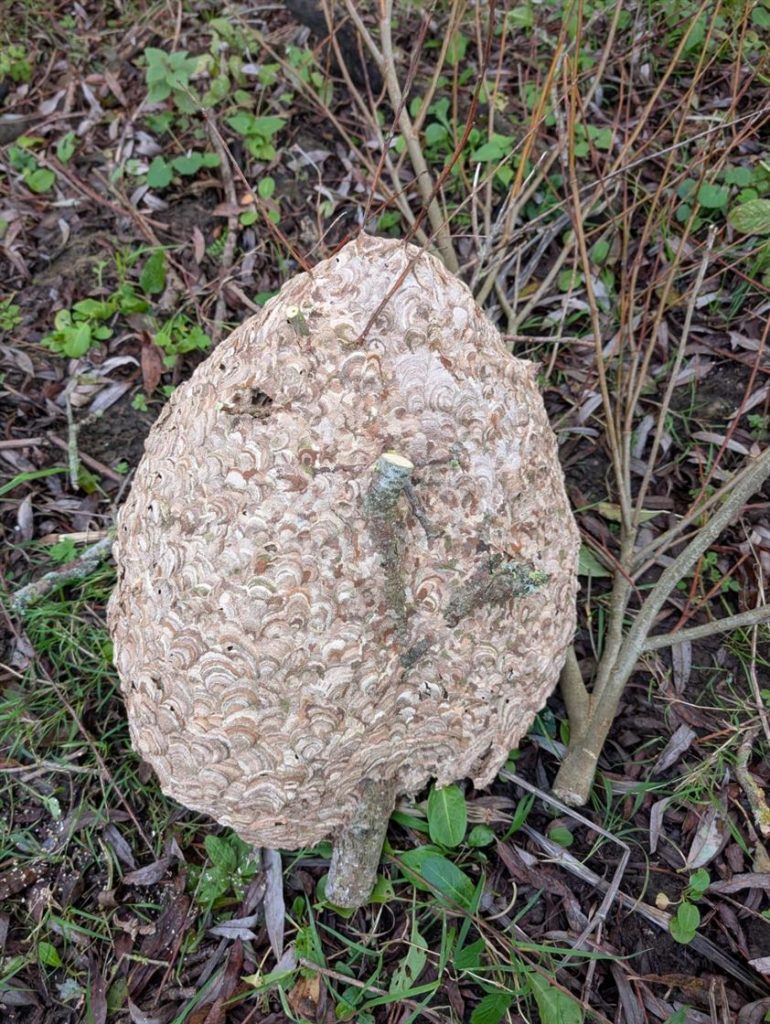
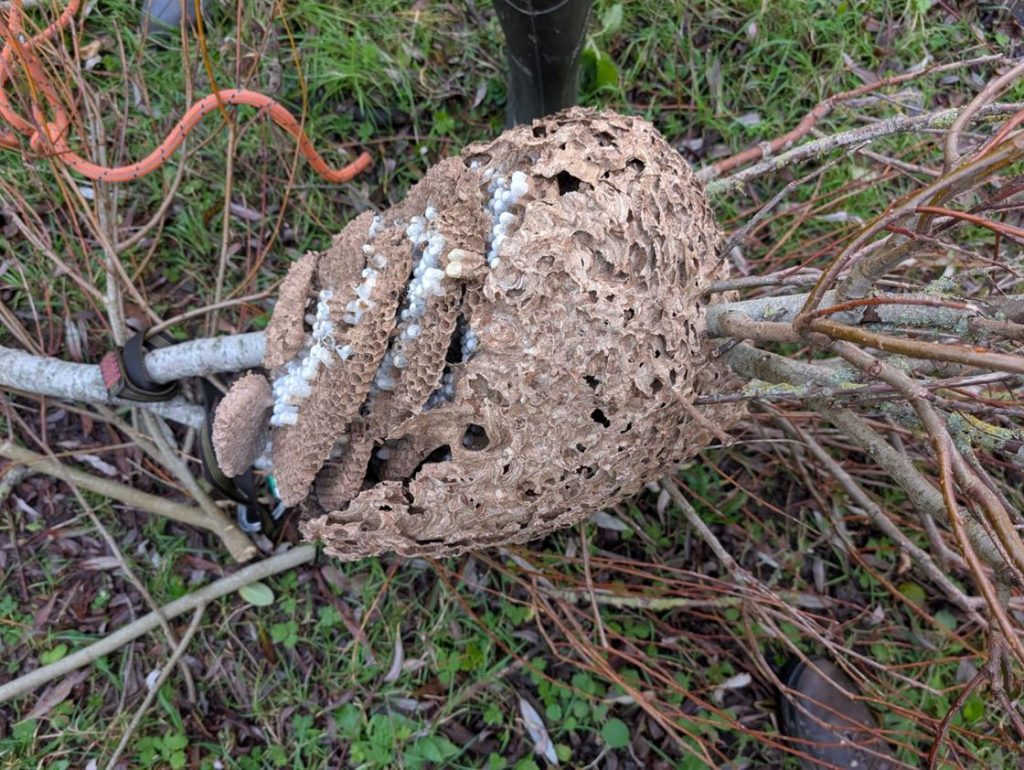
Looking at the photos you can see that this is a specialist job. It requires special skills - tree climbing with insecticide handling and all done wearing a thick suit. That suit is not a bee suit. I has to be at least 5mm thick since the YLH sting can be 3.5mm long.
Click on the video below to see the nest being detached.
